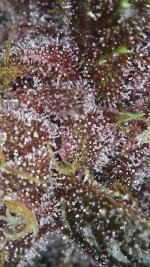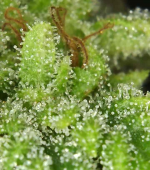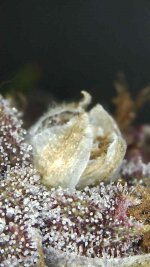-
ICMag with help from Phlizon, Landrace Warden and The Vault is running a NEW contest for Christmas! You can check it here. Prizes are: full spectrum led light, seeds & forum premium access. Come join in!
You are using an out of date browser. It may not display this or other websites correctly.
You should upgrade or use an alternative browser.
You should upgrade or use an alternative browser.
LED and BUD QUALITY
- Thread starter Tropical Sun
- Start date
Pal, i have prolly contributed the most info to this thread that's on topic explaining what marijuana plants (=a smoking product) really are and how they behave in different growing styles. So don't fucking tell me how it all works or that i don't understand the topic.We just tried to help , if you dont see the relation between lights and quality of buds its senseless anyway.
Might be boring to people wich do not understand.
Your lumens/ppfd/par bullshit contributes nothing to the topic.
No, Lumen is weighted completely different it factors green (550nm) much more in than blue or red:
View attachment 18740401
But photosynthesis is based on quanta of photons. It doesn't matter (bluntly speaking) if a blue, green or red (*and darkred) photon gets captured by chlorophyll - because either has enough energy to do photochemical work.
Agreed on the last, it dosent really matter which photon from the PAR range hits the plant.
You still haven't addressed the topic i spoke about, about low initial count diodes and adding their output even though they are in different places across the canopy.
I fear all your arguments about LEDs are right, but you still miss the big picture.
The big picture is like i said, they are low intensity lights (40 LM) each, putting them from here to Thailand wont make it better, you cannot stick a diode on top of a diode, you must put it next to it and so on.
Reality is ! low initial count lights, no matter HID or LED or CFL, dont have enough PAR energy to saturate plants enough to induce the protection elements we all look for,
So yeah 0.2w of light will grow nice healthy plants (LED prove this) but it will do little for other effects like protection of the same plant (trichome developing)
You can see it with your own eyes, just look at Brother Nature bud..
No hard feeling brother, you can be an amazing grower, and i believe you are, but something is putting sticks in your wheels, that something is the LED you are using to induce defense and protection effects from the plant, you need to know that this effect require 1 thing:
HIGH INTENSITY SOURCE.
People think they can add LM\PAR of the diode on the right side of the panel with the diode on the left side of the panel, truth is the further those low powered diodes gets from each other, the worse it gets in terms of saturation places under them.
Last edited:
unbelievable! the density is so painful!
i read research papers about light and it's application for plants almost daily. i have seen every bugbee video.
i assure you that i understand the difference between the terms used to describe light behavior.
i have quoted statements from the manufacturers backing up what i say and some have just ignored the references or refuted them.
i agree with the surna paper. that's why i put it up here. i can see that few have read it.
i can't help chumps that don't want to learn..
you cannot project a lumen rating onto a square meter and get ppfd. you must actually read the light at the canopy to get ppfd. you must use a par meter to do this.
how many of you on this thread even own a par meter? i own 2. and use them daily.
so we have broken down this thread into a point where no one can even agree on basic terms that are being presented with references.
it has devolved into uselessness. i move to close it.
i read research papers about light and it's application for plants almost daily. i have seen every bugbee video.
i assure you that i understand the difference between the terms used to describe light behavior.
i have quoted statements from the manufacturers backing up what i say and some have just ignored the references or refuted them.
i agree with the surna paper. that's why i put it up here. i can see that few have read it.
i can't help chumps that don't want to learn..
you cannot project a lumen rating onto a square meter and get ppfd. you must actually read the light at the canopy to get ppfd. you must use a par meter to do this.
how many of you on this thread even own a par meter? i own 2. and use them daily.
so we have broken down this thread into a point where no one can even agree on basic terms that are being presented with references.
it has devolved into uselessness. i move to close it.
Last edited:
Delta, you maybe get 1500 ppfd at 26 inch although i find it very hard to believe
But you still need to realize it dosent matter, for growing you have created a beast that will smoke any other light set up ive seen, for that i take my tin foil cap off
But please dont flower under them, you are not causing a reaction of plants enough with this light sources, you need a high intensity one\s not many low ones.
But you still need to realize it dosent matter, for growing you have created a beast that will smoke any other light set up ive seen, for that i take my tin foil cap off
But please dont flower under them, you are not causing a reaction of plants enough with this light sources, you need a high intensity one\s not many low ones.
@snakedope did you look at the fohse A3i link i posted?
their 1500 watt light also has thousands of diodes.
their 1500 watt light also has thousands of diodes.
Cerathule
Well-known member
I think that when we talk about the number of photons available to the plant that this mostly affects how much harvest we pull in terms of dry-matter weight.Agreed on the last, it dosent really matter which photon from the PAR range hits the plant.
You still haven't addressed the topic i spoke about, about low initial count diodes and adding their output even though they are in different places across the canopy.
I fear all your arguments about LEDs are right, but you still miss the big picture.
The big picture is like i said, they are low intensity lights (40 LM) each, putting them from here to Thailand wont make it better, you cannot stick a diode on top of a diode, you must put it next to it and so on.
Reality is ! low initial count lights, no matter HID or LED or CFL, dont have enough PAR energy to saturate plants enough to induce the protection elements we all look for,
So yeah 0.2w of light will grow nice healthy plants (LED prove this) but it will do little for other effects like protection of the same plant (trichome developing)
You can see it with your own eyes, just look at Brother Nature bud..
No hard feeling brother, you can be an amazing grower, and i believe you are, but something is putting sticks in your wheels, that something is the LED you are using to induce defense and protection effects from the plant, you need to know that this effect require 1 thing:
HIGH INTENSITY SOURCE.
People think they can add LM\PAR of the diode on the right side of the panel with the diode on the left side of the panel, truth is the further those low powered diodes gets from each other, the worse it gets in terms of saturation places under them.
Because photons are the motor to capture carbon.
Regarding resin, there is some evidence of a spectral composition adding to that, esp. UV/blue. Trials show that a lack (or total absence) of these wavelengths produce less frost, but just about a few percentages less. So it's not really that big of a deal and may be down to mostly genetics.
There is also a "dillution-effect" documented that illustrates that more mass could mean lower cannabinoid-levels - when drawn by percentages (ie. in relative terms, and not net cannabinoids).
Further, balance seems to be necessary, if one goes overboard with anything the results will rather be negative.
Last month I used a new 10.000k MH bulb in exchange for a 6500k and it wreaked havoc on the foilage of the nearest plants. I'm still not sure if I should use that in the last remaining weeks of flower, it could damage my supplementary LED lenses as well.... but a bit more frost would also be nice.
Last edited:
i for one be more confused then ever.....
Cerathule
Well-known member
From 30 cm distance
View attachment 18740651
Isn't it amazing how suddenly ~~70% of the photons just vanish? XD Apparently an additional 30cm distance is too problematic for gauge bosons that travels at lightspeed!
There's a law of energy-conservations, photons just don't auto-selfdestruct or beam into another dimension.
So this is where the faultiness of PPFD readings, and the ineptitude of quantum meters to capture all light-particles really shows.
Very nice values Snipp, for growing it is above and beyond.
For flowering you dont have enough intensity at the source, no matter your 2nd ppfd numbers
This plant requires high intensity source (1 source or even 300 high sources, dont matter, as long as they are high enough power), without it, you wont get sufficient reaction in the defense mechanism, which is what you ultimately want.
You dont want to smoke leaves and plant mass right ? thats why hash was done, extracts, oil, you name it, we want to smoke\ingest\consume the stuff the plant makes in order to protect itself from something.
You can tell me its bugs, cows, or flying unicorns, the reality is that for 50 years everyone was growing killer dank shit, they all relied on intensity (HIDs or high watt CFLs), no one looked for spectrum, those that looked, was looking for a way to advance vegging more, why ? cuz they already knew their lame ass spectrum par rating HPS was giving amazing glue results.
If you dont accept the fact that you need high intensity source you are denying 50 years of crazy buds worldwide grown by poor spectrum, poor par lamps, high intensity. (again, i mean flower period)
I also dont like how my plants look under HPS while vegging, like GoatCheese has mentioned the LPS lights, the narrower the spectrum, the more crooked your vegging and overall health will be.
Everything is common sense, no need to be a genius, these are thing you see with your naked eye.
But still, when it came to the money time (flowering, trichome production) HPS never fails to deliver great buds, and will keep doing so (as long as you are not burning them, the room for error with this heat spreader is not a small challenge)
We have a problem with bud quality under LED, pollen quality under LED, thats why we are here, to figure it out, the history, the science, everything, dont make this into a clash of the titans.
For flowering you dont have enough intensity at the source, no matter your 2nd ppfd numbers
This plant requires high intensity source (1 source or even 300 high sources, dont matter, as long as they are high enough power), without it, you wont get sufficient reaction in the defense mechanism, which is what you ultimately want.
You dont want to smoke leaves and plant mass right ? thats why hash was done, extracts, oil, you name it, we want to smoke\ingest\consume the stuff the plant makes in order to protect itself from something.
You can tell me its bugs, cows, or flying unicorns, the reality is that for 50 years everyone was growing killer dank shit, they all relied on intensity (HIDs or high watt CFLs), no one looked for spectrum, those that looked, was looking for a way to advance vegging more, why ? cuz they already knew their lame ass spectrum par rating HPS was giving amazing glue results.
If you dont accept the fact that you need high intensity source you are denying 50 years of crazy buds worldwide grown by poor spectrum, poor par lamps, high intensity. (again, i mean flower period)
I also dont like how my plants look under HPS while vegging, like GoatCheese has mentioned the LPS lights, the narrower the spectrum, the more crooked your vegging and overall health will be.
Everything is common sense, no need to be a genius, these are thing you see with your naked eye.
But still, when it came to the money time (flowering, trichome production) HPS never fails to deliver great buds, and will keep doing so (as long as you are not burning them, the room for error with this heat spreader is not a small challenge)
We have a problem with bud quality under LED, pollen quality under LED, thats why we are here, to figure it out, the history, the science, everything, dont make this into a clash of the titans.
Something that has really caught my eye was the "potential frost" LEDs are able to deliver, thats the only reason i somewhat believe in their future developments, their spectrum is already tailored, 90 maybe more % CRI like the sun, accuracy in par is on point, and can be switched to any plant or stage at any time, LEDs are like Optimus Prime haha
Im always saying that if they got this potential at 0.2w or 0.5w, imagine 10w diodes or 20w
I said it earlier, this will break the rules of what we know, intensity and perfect par spectrum ? yum yum
Just hope it wont make the plants die like the 0.2w diodes when ur too close, or this whole concept is not gonna work also
Im always saying that if they got this potential at 0.2w or 0.5w, imagine 10w diodes or 20w
I said it earlier, this will break the rules of what we know, intensity and perfect par spectrum ? yum yum
Just hope it wont make the plants die like the 0.2w diodes when ur too close, or this whole concept is not gonna work also





